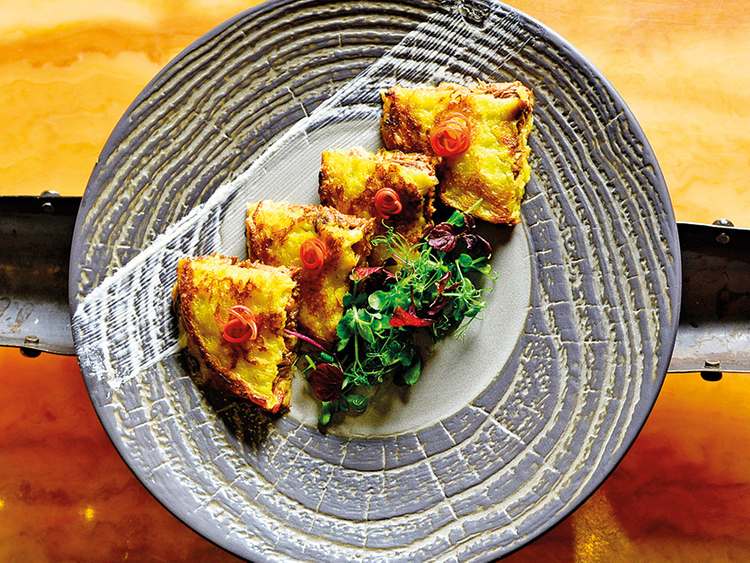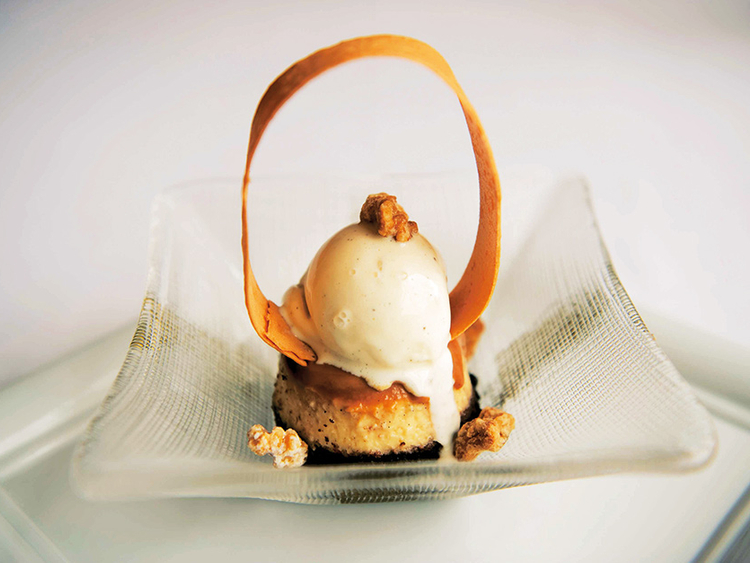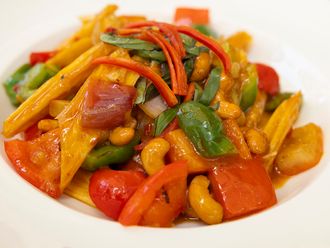
With more than 45 restaurants already under his belt, Richard Sandoval’s restaurant empire covers six countries and over a dozen concepts. “In the next couple of months it could be 50,” he says, over a quick coffee at the Grosvenor House hotel in Dubai, where he runs the Latin steakhouse Toro Toro.
A hipper, more colourful version of the meatery opens at Jumeirah Etihad Towers at the end of this month, and he’s here for a last menu tasting and to compile a final snag list before the restaurant opens to diners.
“Chefs take advantage of the copy-paste concept, but I’m not a big fan of that,” Sandoval tells Gulf News tabloid! “The menu will be similar, but it’s going to be a lot more electric. We’ve worked to create something different from what diners already know.”
Other concepts are scheduled for Costa Rica, and Aspen and Fort Lauderdale in the US.
As the godfather of Mexican food, Sandoval has been largely responsible for taking the cuisine to a wider audience, and finely detailing the distinction from the more commonly known Tex Mex. The former professional tennis player, 50, combines traditional Latin American ingredients with international techniques, creating in the process innovative dishes with authentic flavours.
After working at the French-American bistro Savann in New York City in the early nineties, the Acapulco native went on to launch Maya, a Mexican restaurant in 1995 that was inspired by his home country’s local Tequilerias. It was a concept he was able to successfully replicate, first in San Francisco, and later, in 2007, at the Le Royal Meridien hotel in Dubai. One of the earliest Latino fine dining concepts in the country, it was his first international venture, and he has since expanded into Serbia, Qatar, Hong Kong and the Caribbean.
Toro Toro Abu Dhabi
Toro Toro Abu Dhabi will be his fourth restaurant in the UAE, five years after the Dubai venue was launched.
“After we opened Maya and Toro Toro, you know Latin American food blew up in this part of the world,” he says, explaining that part of his success, particularly for the steakhouse, is its wide appeal. “You know everybody eats meat across the world. But the nice thing about Toro Toro is that it also has small plates — ceviches, antojitos, anticuchos, which fits with the way we eat now.
“When I built this brand, the steakhouses were not built for women. You know, in the US particularly, they to have a lot of leather and the menus are very heavy. The menu at Toro Toro, though, is very light. You could actually eat without even touching the grill section,” Sandoval says.
Toro Toro Abu Dhabi will be able to cater to about 250 diners, with 90-100 covers in the main dining room and another 150 on an outside terrace. Sandoval’s team will oversee a ceviche bar and a rodizio or steak section in addition to the main kitchen.
“It’s a substantial kitchen, but what I like is the way it’s been built, I can pull back if I’m not doing a huge amount of covers or open up if I’m very busy.”
Trade insiders in both emirates confess that they’ve seen better days, and Sandoval says this operational flexibility is key to running restaurants. But can Toro Toro beat those odds? “Nothing is bulletproof,” he declares. He explains that while more restaurants are opening everywhere, the customer base isn’t expanding as quickly, and clever investors would do well to understand that. “You’re not seeing any big restaurants being built anymore.”
Sandoval opens Toro Toro Abu Dhabi in partnership with Perfetti Hospitality. Its founder and CEO Turab Saleem, who has worked on concepts such as Asia de Cuba and Ushna, says the brand’s DNA is the same whether in Washington, Miami or Abu Dhabi.
“We have elevated the interior [of the Abu Dhabi venue] to a different level. It is more vibrant, the colours are more fun in keeping with the Latin essence, and the food and beverage experience is elevated as well, with presentations that are new to Abu Dhabi,” he told Gulf News tabloid! via email.
How he does it
Partnerships and licensing are integral to Sandoval’s business. He owns and runs the umbrella company, Richard Sandoval Restaurants, under which he operates 12 restaurants, including Pampano, with the tenor Placido Domingo.
“Then I have the licensing side, which is about 35 restaurants today. They’re not partnerships but licenses that pay a development fee and a percentage of sales,” he says. It’s what keeps him sane, he explains. “Because it’s hard to be running 50 restaurants around the world. It’s not possible,” he says candidly.
Operating different business models and concepts in dissimilar geographical areas is how he guards against implosion, and ensures he doesn’t face a public meltdown of the sort that has affected other celebrity chefs. “The more that come up, you know, the more challenging things get," he says. “[But] I’ve diversified myself enough to where you know if one segment kind of goes down, I have another — and the licensing, that’s pretty much bulletproof. Because at the end of the day, if you’re working with hotels, you’re almost like a consultant. And then, each area goes through cycles, so New York is down, California is up and New Mexico in a recession. The licensing side kind of balances out the company, so that I’ve been in business for 30 years and I’m still here.”
Myth-busting with Richard Sandoval
Richard Sandoval believes contemporary Mexican food could be the next big trend. “It’s come out of the closet and it’s going mainstream,” he says. “But you’re not going to get Mexican restaurants with the sombreros and carriages; it’ll just be great food. Like that new restaurant in DIFC, [Peyote], you go in there, you can’t tell it’s Mexican.”
We grabbed the chance to ask him what popular beliefs about Mexican food get his goat. He laid out three:
1. It’s not all Tex-Mex: Mexican food isn’t about taco shells, heavy cream and burritos, he insists. “It was very challenging because when Maya opened, most guests came in and said, ‘Why should we pay $50 [Dh183.6] when we can get three times as much and spend $14.95 at Burrito-ville?’ And I made them rationalise that, like French or Italian, we use the same proteins, but instead of crème fraiche we use crema Mexicana, or instead of thyme, we use cilantro. And I think once people started visualising it that way, stigma went away that everything was heavy and fat-laden,” he says.
2. It’s not all super-spicy: While chillies are an integral part of the Mexican kitchen, they’re used for flavour in most dishes, Sandoval says. “Some people might like super-spicy food, with habaneros, but by and large, Mexican food is like Indian food — it’s spicy but it’s not violent. You take a mole for example — the chocolate balances things beautifully.”
3. There’s more than five dishes. Think beyond fajitas and enchiladas to the wider variety of Mexican food, Sandoval says. “With the wave of new Mexican food, we’ve seen a lot of how diverse a cuisine it is. There’s no limits to the ingredients and what you can do with them. I mean look at the amount of chilies you have, or the moles, the masas, the wide variety of grains, it’s very diverse,” he says. “A taco shell doesn’t have to be a taco shell with ground beef, it could have braised lamb, short ribs, fish. There’s a shift in public consciousness and that’s something we’re going to see.”
Recipe: Ceviche de huachinango
(Pink snapper ceviche)
The secret behind this recipe is the leche de tigre, which is the sauce added to the rest of the ingredients. It helps to bring all the flavours together and balances the dish.
Ingredients
90g Pink snapper, diced
150g Leche de tigre (recipe)
½ red onion; minced
50mlOrange juice
¼ avocado, diced
20ml olive oil
1 tsp coriander leaves, chopped
Roasted sweet potato for garnish
For the Leche de tigre or tiger milk
300ml Fish stock
700ml lemon Brazilian green juice
10 cloves garlic, or more as desired
1-inch piece Ginger
2 stalks celery (about 80g)
200g White fish
250g White onion
1 tsp, Coriander leaf
4 tsp salt
10 ice cubes
1 tsp Habanero chili (deseed and pith removed)
Method
1. First make the leche de tigre. Mix all the ingredients and blend until smooth. Strain and keep in the fridge so it is very cold.
2. Prepare the rest of the ingredients and keep separate until you are ready the serve.
3. When ready to eat, mix the ingredients otherwise the lime will “overcook” the fish.
4. Season the fish with the salt and mix well. Add the rest of the ingredients and mix. Finally add the leche de tigre and orange juice and mix one last time.
5. Check the seasoning and serve straight away.





















